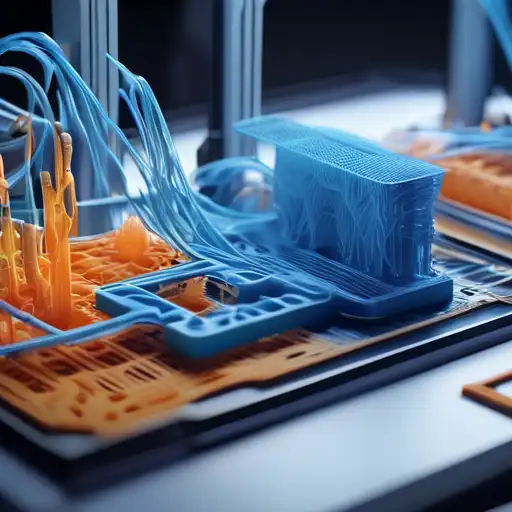Introduction to 3D Printing
3D printing, also known as additive manufacturing, is a process of creating three-dimensional objects from a digital file. This innovative technology builds objects layer by layer, offering unparalleled flexibility in design and production. From prototyping to full-scale manufacturing, 3D printing is revolutionizing industries worldwide.
The Process Behind 3D Printing
The journey of 3D printing begins with a digital 3D model, which is sliced into thin layers by specialized software. The printer then reads these layers and deposits material, such as plastic, metal, or resin, to build the object from the bottom up. This method allows for complex geometries that traditional manufacturing cannot achieve.
Applications of 3D Printing
3D printing has found applications in various fields, including:
- Healthcare: Custom prosthetics, dental implants, and even bioprinting of tissues.
- Aerospace: Lightweight components for aircraft and spacecraft.
- Automotive: Prototyping and manufacturing of parts with reduced weight and increased strength.
- Education: Teaching aids and models for better learning experiences.
Benefits of 3D Printing
The advantages of 3D printing are numerous, including:
- Cost Reduction: Lower material waste and no need for expensive molds.
- Speed: Rapid prototyping speeds up the development process.
- Customization: Products can be tailored to individual needs without additional costs.
- Sustainability: Efficient use of materials and the ability to recycle prints contribute to environmental conservation.
Challenges and Future Directions
Despite its benefits, 3D printing faces challenges such as limited material options and slower production speeds for large quantities. However, ongoing research and development are paving the way for faster printers, new materials, and even larger-scale applications. The future of 3D printing promises further integration into mainstream manufacturing and beyond.
Conclusion
3D printing is not just a tool for creating objects; it's a transformative technology that is reshaping how we think about design, production, and innovation. As we continue to explore its potential, 3D printing stands as a cornerstone of future manufacturing, offering solutions that were once deemed impossible. The journey of creating the future layer by layer has just begun, and the possibilities are limitless.
